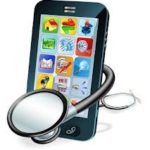 What Benefits Will They Bring?
What Benefits Will They Bring?
By Tom Sullivan, Executive Editor, Government Health IT
Twitter: @GovHITEditor
It’s becoming almost cliché to suggest that at some point in the future fitness apps and devices will no longer comprise the lion’s share of mobile health technologies. What’s less understood, perhaps, is what mHealth opportunities exist for doctors and hospitals moving forward.
What will be the predominant apps healthcare providers actually use? And what benefit will those bring?
“Traditional healthcare players like physicians and hospitals are the top ranked distribution channel for mHealth apps in the next five years,” according to a report from research2guidance. “The underlying assumption is that within this time frame mHealth apps will have become well integrated into the healthcare processes.”
Indeed, leading that charge will be remote monitoring technologies and consultation apps, the Berlin-based firm predicted, so it matches that mHealth apps will help providers save money by reducing non-compliance and readmissions.
What’s more, respondents of an R2G survey suggested that mHealth will enable providers to improve treatment outcomes, slow healthcare costs, enhance patient-doctor interactions and arm patients with technology that helps them take better care of themselves.
“The likelihood that soon doctors and patients will meet in the doctor’s office to talk about apps which could support medical treatments is very high, given the high penetration rate of smartphones and tablets among doctors and the interest patients show in mHealth apps,” the report explained. “It also means that not only will new players such as sensor vendors or mHealth data aggregators enter the healthcare market, but also that they will become the dominant participants.”
And while the global mHealth market faces substantial obstacles, such as data security and standards, R2G also projected that it will continue growing like gangbusters, from $2.4 billion today to some $26 billion by 2017.
What other mHealth apps, devices, or innovative uses are poised to grab a slice of that big pie?
This article was originally published on Government Health IT and is republished here with permission.
